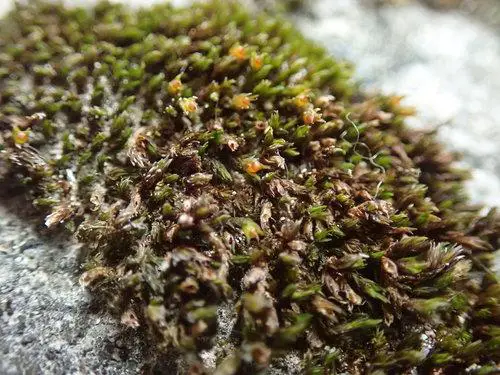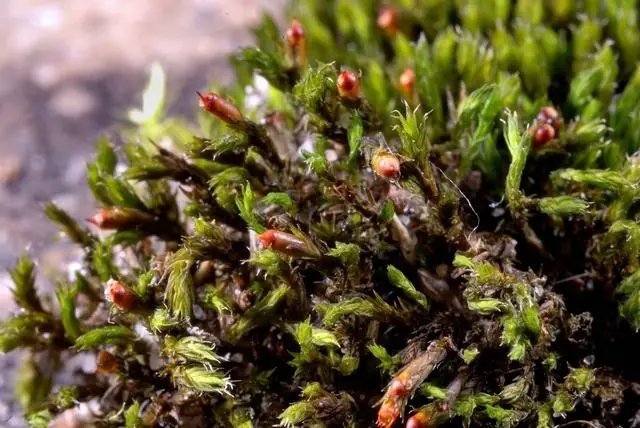
medium.jpeg from: https://www.inaturalist.org/taxa/575100-Schistidium-dupretii
Introduction
In the vast and captivating world of bryophytes, one tiny moss stands out as a true marvel – the Schistidium dupretii (Thér.) W.A.Weber

120px-Schistidium_dupretii_(a%2C_132843-473159)_0001.JPG from: https://commons.wikimedia.org/wiki/Schistidium_dupretii
. Belonging to the Grimmiaceae family and commonly known as Schistidium, this unassuming plant has captured the hearts of moss enthusiasts worldwide with its resilience and unique adaptations.
Background
Before delving into the intricacies of this remarkable moss, let’s set the stage. Bryophytes, a group that includes mosses, liverworts, and hornworts, are often overlooked but play a crucial role in various ecosystems. These diminutive plants have been around for millions of years, predating even the dinosaurs, and have evolved to thrive in some of the harshest environments on Earth.
Main Content
Morphology and Identification
Schistidium dupretii is a small acrocarpous moss, meaning its sporophytes (spore-bearing structures) grow at the tips of the stems. Its leaves are lanceolate (lance-shaped) and have a distinctive costa (midrib) that extends beyond the leaf apex, forming a hair-like structure called an

large.jpg from: https://www.naturalista.mx/guide_taxa/225523
awn. This feature is a hallmark of the Grimmiaceae family and aids in water conduction and protection against desiccation.
Global Distribution and Habitat
This hardy moss is widely distributed across the Northern Hemisphere, thriving in various habitats, from exposed rock surfaces to tree bark and even concrete structures. Its ability to withstand extreme conditions, such as drought, intense sunlight, and temperature fluctuations, is truly remarkable. Schistidium dupretii is often found in urban environments, where it colonizes walls, roofs, and pavements, adding a touch of green to the concrete jungle.
Ecological Roles and Adaptations
Despite its diminutive size, Schistidium dupretii plays a vital role in its ecosystem. It serves as a pioneer species, colonizing bare surfaces and paving the way for other plants to establish themselves. Additionally, this moss acts as a natural sponge, absorbing and retaining moisture, which helps prevent soil erosion and provides a microhabitat for other organisms, such as tardigrades and rotifers.
One of the most fascinating adaptations of Schistidium dupretii is its ability to undergo desiccation tolerance. When conditions become too dry, the moss can essentially shut down its metabolic processes and enter a state of dormancy, only to revive when water becomes available again. This remarkable feat is achieved through the production of specialized proteins and sugars that protect the moss’s cellular structures during dehydration.
Case Studies/Examples
In urban environments, Schistidium dupretii has proven to be a valuable bioindicator, helping scientists monitor air pollution levels. Its sensitivity to certain pollutants makes it an ideal candidate for assessing the quality of the air we breathe.
Technical Table
| Characteristic | Description |
|---|---|
| Phylum | Bryophyta |
| Class | Bryopsida |
| Order | Grimmiales |
| Family | Grimmiaceae |
| Genus | Schistidium |
| Species | Schistidium dupretii (Thér.) W.A.Weber |
| Growth Form | Acrocarpous |
| Leaf Shape | Lanceolate |
| Leaf Apex | Awn (hair-like extension) |
Conclusion
Schistidium dupretii is a true testament to the resilience and adaptability of bryophytes. Its ability to thrive in harsh environments and its unique morphological and physiological adaptations make it a fascinating subject of study for moss enthusiasts and scientists alike. As we continue to explore the intricate world of mosses, who knows what other wonders await us in the realm of these unassuming yet remarkable plants? Perhaps the next time you encounter a patch of green on a city wall, you’ll pause and appreciate the incredible journey of Schistidium dupretii.